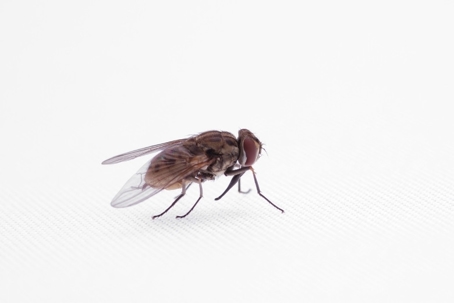What Is The Lifespan Of A Fly?
The lifespan of a fly can vary depending on its species, environmental conditions, and other factors. In general, flies have relatively short lifespans compared to many other insects. Here is the lifespan of a fly:
Fly Lifespan
Flies typically go through a complete metamorphic life cycle, which includes four stages: egg, larva, pupa, and adult. The length of each stage can vary, but the entire life cycle is relatively short, often measured in weeks.
- Egg Stage: The first stage of a fly's life cycle is the egg stage. Female flies lay their eggs in suitable locations, often near decaying organic matter or food sources. The time it takes for fly eggs to hatch depends on factors such as temperature and humidity, but it is usually a matter of hours to a few days.
- Larva Stage (Maggot): After hatching from the eggs, flies enter the larva stage. During this stage, they are commonly referred to as maggots. The duration of the larva stage can vary significantly among different fly species but generally ranges from several days to a few weeks. Larvae feed on decaying organic matter, which provides them with essential nutrients.
- Pupa Stage: The larva eventually transforms into the pupa. Inside the pupa, the fly undergoes metamorphosis and develops into its adult form. The pupa stage typically lasts for about 3-5 days, but it can be shorter or longer depending on environmental conditions.
- Adult Stage: Once the metamorphosis is complete, the fly emerges from the pupa as an adult. The adult fly is the most recognizable and shortest-lived stage in the life cycle. The lifespan of an adult fly can range from a few days to a few weeks, with some exceptions. Factors influencing the adult fly's lifespan include species, environmental conditions, availability of food, and predation.
The specific lifespan of a fly species can vary widely. Houseflies (Musca domestica), for instance, typically live for about 15-25 days under ideal conditions. Fruit flies (Drosophila melanogaster) have a shorter lifespan, usually living for around 40-50 days. In contrast, larger fly species, like tsetse flies, can live for several weeks to a few months.
The lifespan of a fly is influenced by various external factors, including temperature, humidity, food availability, and the presence of predators. Flies play important roles in ecosystems, particularly in decomposition and nutrient cycling, despite their relatively short lifespans.
Learn more: How Long Do Flies Live?

